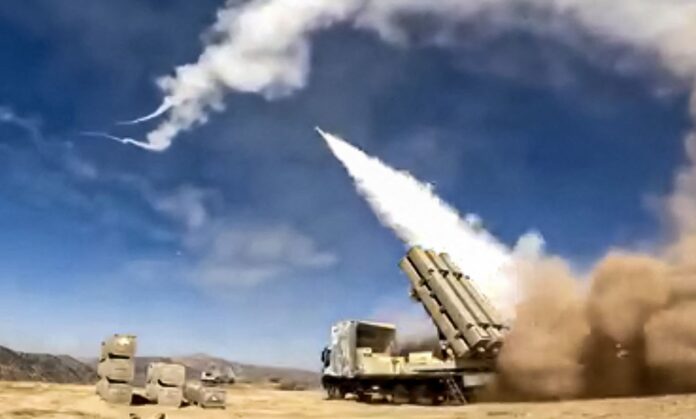A tense situation in the Middle East escalated over the weekend as Iranian-backed militias launched a major attack on a US airbase in western Iraq. According to the US Central Command (CENTCOM), numerous ballistic missiles and rockets were fired at the Al-Asad airbase on Saturday evening local time. Most were intercepted by the base’s defense systems, but some did impact the base, causing damage that is still being assessed.
Perhaps most concerning is that several US service members are now undergoing evaluations for possible traumatic brain injuries resulting from the blasts. At least one Iraqi soldier was also wounded in the attack. The Islamic Resistance in Iraq, an Iran-backed militia group, has claimed responsibility for the missile strike.
This latest incident is believed to be the largest in a series of over 140 attacks targeting US forces in Iraq and Syria since mid-October last year. It represents a pattern of aggression by Iranian proxies against American troops stationed in the region. However, unlike previous assaults using drones and rockets, this one involved more advanced ballistic missiles. So it marks a serious escalation by the militias, backed by their Iranian benefactors.
The attack on Al-Asad airbase mirrors recent actions by Houthi rebels in Yemen, who also receive backing from Iran. The Houthis have been aggressively targeting commercial shipping vessels in the Red Sea and Gulf of Aden over the past couple of weeks. Their goal appears to be showing solidarity with Palestinians amid the conflict between Israel and Hamas in Gaza. Now the Iran-backed militias in Iraq seem to be taking a page from the Houthi playbook.
The US has responded to the Houthis’ maritime attacks with retaliatory strikes on their missile launch sites and other targets. The Pentagon has labeled these counterattacks as purely “defensive” measures against the rebel group’s aggression. It remains to be seen whether the strike on Al-Asad will prompt a similar US response against the militias in Iraq. The escalation by Iran’s proxies comes on the heels of a US drone strike in Baghdad earlier this month, which killed a senior leader of one of the militias.
So tensions between the US and these groups have been simmering for months and now appear to be coming to a boil. With 2,500 American troops still in Iraq and another 900 in Syria, there is growing concern about their security and safety amidst the deteriorating situation. The US forces are there specifically to counter Islamic State militants and prevent their resurgence. But now the troops face mounting threats from the very militias they are supposed to be partnering with for stability in the region.
This complex dynamic reflects the competing agendas at play in Iraq and the wider Middle East. The US wants to keep ISIS contained but avoid getting embroiled in another regional conflict. Iran seeks to expand its influence and leverage against America. And militias like the Islamic Resistance in Iraq are caught in between, opposing any US presence in the area. Their allegiances and ideologies align more closely with Iran’s goals.
So the weekend missile attack demonstrates the tenuousness of the situation. It will likely lead to even greater mistrust between the US and militia groups, making partnership and progress difficult. Unless tensions can be defused, more incidents and escalations may be on the horizon. The volatility could spiral in dangerous and unpredictable directions.
Diplomatic efforts will be key to preventing outright conflict and further loss of life. But Iran seems intent on asserting its power and autonomy. And the militias appear determined to oppose US presence in the region through shows of force. With political will on all sides hardening, the path to de-escalation looks rocky at best.
Iraq’s government finds itself stuck in the middle, relying on US support but also heavily influenced by Iran. Its leadership will need to take bold steps to restrain the militias and reduce hostilities. Otherwise, Iraq could once again get caught in the crossfire as it has so often in its recent history.
The weekend missile attack underscores the knives-edge fragility of security and stability in the Middle East. Tensions between the US and Iran’s proxies have the potential to flare up rapidly. The situation requires thoughtful, engaged diplomacy to protect lives and prevent greater upheaval. But the present trajectory is a perilous one.





















